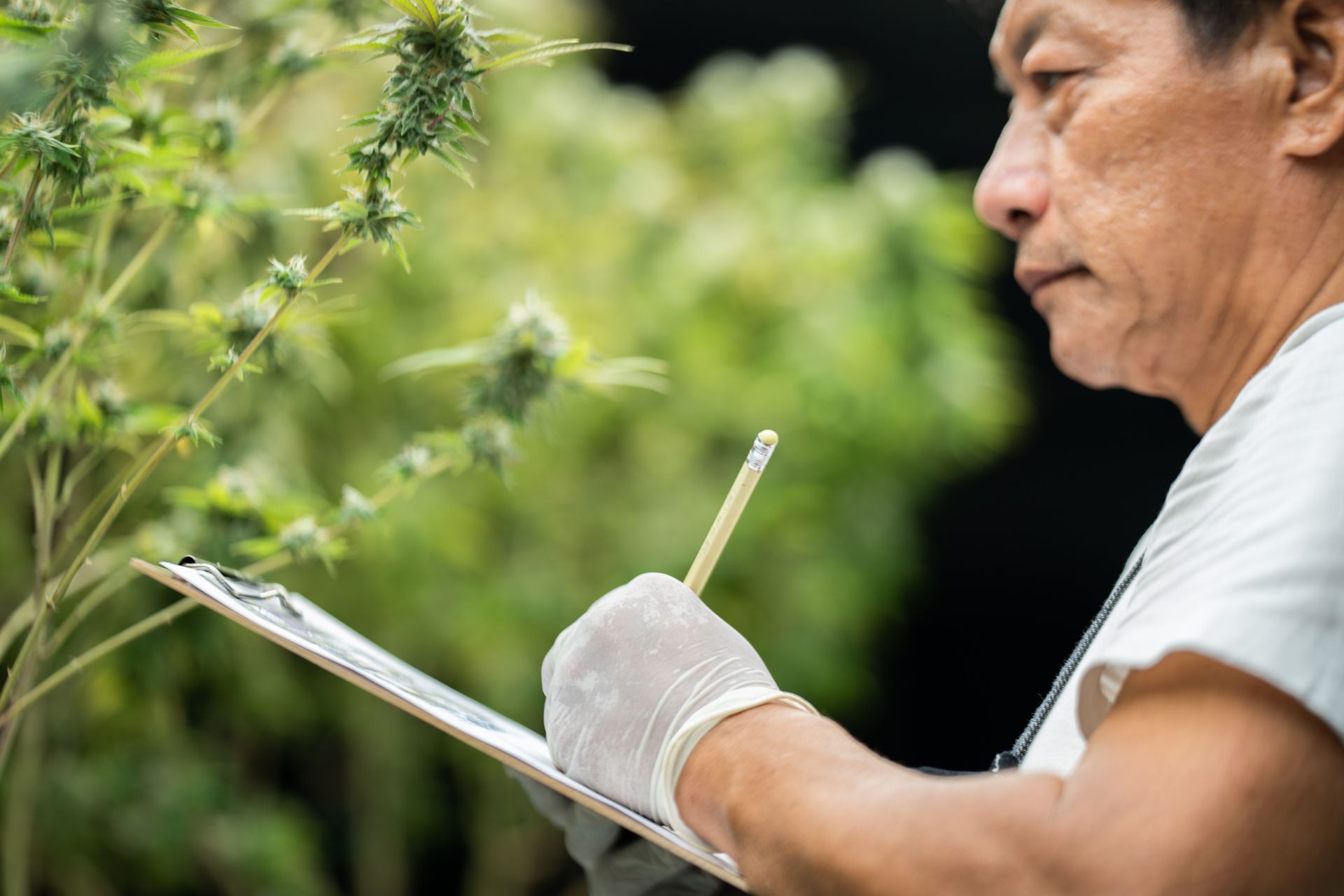5 Things to Consider When Opening a Cannabis Dispensary
See How We're Different
or call us: (215) 653-8411
1. Understand and Navigate Regulatory Challenges
One of the most critical factors to consider when opening a cannabis dispensary is the regulatory environment. Cannabis laws vary significantly from state to state, and even local jurisdictions can impose additional restrictions. For example, in New York, around 100 licensed cannabis dispensaries are currently facing potential relocation due to a misinterpretation of zoning laws. This highlights the importance of thoroughly understanding local regulations before committing to a location.
Regulatory compliance doesn’t stop at zoning. Licensing requirements, security measures, product testing, and packaging rules all demand close attention. Failure to comply can lead to fines, license revocation, or forced closures, which can devastate a new business. Staying informed about changes and engaging with local authorities early in the process can help prevent costly setbacks.
Given the rapidly evolving legal landscape, it’s wise to consult with legal experts who specialize in cannabis law. They can assist in interpreting complex regulations and ensuring your dispensary operates within the legal framework. For more insight into regulatory challenges, see the New York dispensary zoning issue.
Moreover, understanding the nuances of compliance can also extend to employee training and customer interactions. Staff must be well-versed in the legalities surrounding cannabis sales, including age verification and responsible consumption guidelines. This not only protects the business from legal repercussions but also fosters a culture of safety and responsibility among customers. Additionally, as regulations can change frequently, ongoing training sessions can help ensure that employees remain informed and prepared to address any questions or concerns that arise.
Furthermore,
engaging with community stakeholders can be a strategic move to navigate regulatory challenges. Building relationships with local businesses, neighborhood associations, and advocacy groups can provide valuable insights into community expectations and concerns. This proactive approach can enhance your dispensary’s reputation and may even influence local policymakers in favor of more favorable regulations, creating a more supportive environment for your business and the cannabis industry as a whole.
2. Identify and Target Your Consumer Demographics
Understanding your target customers is essential for tailoring your product offerings and marketing strategies. Currently, millennials dominate the cannabis market, accounting for 46.2% of total sales in the U.S. Meanwhile, Generation Z is the fastest-growing demographic, with an 11.3% year-over-year increase in market share. These groups have distinct preferences and consumption habits that dispensaries should consider.
Millennials often seek a variety of products, including flower, edibles, and concentrates, and tend to value quality and brand reputation. Gen Z consumers, on the other hand, are more inclined toward innovative products such as cannabis beverages, which are projected to experience the highest growth rate in the market with a CAGR of 20.6% from 2025 to 2030. This younger generation is also more likely to engage with brands that emphasize sustainability and social responsibility, making it crucial for dispensaries to align their values with those of their customers.
By analyzing these trends, dispensaries can stock products that resonate with their core customer base and create targeted promotions that drive loyalty. For instance, offering eco-friendly packaging or supporting local farmers can appeal to the environmentally-conscious mindset of many Gen Z consumers. Additionally, leveraging social media platforms, where these demographics are most active, can enhance brand visibility and foster community engagement. Staying current with demographic shifts and emerging preferences will position your dispensary to capitalize on evolving consumer demands. For more details on demographic trends, visit cannabismdtelemed.com.
Furthermore, understanding the purchasing behaviors of these demographics can provide valuable insights into how to optimize marketing efforts. Millennials are known for their research-driven approach, often reading reviews and seeking recommendations before making a purchase. In contrast, Gen Z tends to favor quick, visually appealing content that captures their attention instantly. This difference highlights the importance of tailoring marketing materials to fit the preferences of each group, utilizing platforms like Instagram and TikTok for Gen Z, while providing in-depth articles and reviews for millennials. By effectively segmenting your marketing strategies, dispensaries can ensure they meet the unique needs of each demographic, ultimately driving sales and fostering brand loyalty.
3. Choose the Right Location with Market Saturation in Mind
Location is a cornerstone of retail success, and cannabis dispensaries are no exception. However, unlike many other industries, cannabis markets can quickly become saturated, leading to increased competition and price pressures. For instance, Oregon’s cannabis market is currently facing a significant oversupply, with a record harvest of 12.3 million pounds in 2024. This glut has caused price reductions and financial challenges for many producers and retailers.
When selecting a location, it’s crucial to evaluate the local market’s supply and demand balance. Entering an oversaturated market can limit your dispensary’s profitability and growth potential. Conversely, underserved areas might offer more opportunity but could come with additional regulatory or logistical challenges.
Additionally, proximity to your target demographic, accessibility, and visibility are important factors. A well-chosen location can enhance foot traffic and brand recognition, while poor placement may hinder customer acquisition. To understand market dynamics better, explore the situation in Oregon at axios.com.
Furthermore, it is essential to consider the surrounding businesses and community vibe when selecting a location for your dispensary. Areas with complementary businesses, such as wellness centers, cafes, or yoga studios, can create a synergistic effect, attracting a clientele that aligns with cannabis culture. Engaging with local community events or initiatives can also enhance your brand's visibility and foster customer loyalty. Understanding the local demographics—such as age, income levels, and lifestyle preferences—will help you tailor your product offerings and marketing strategies to better meet the needs of your potential customers.
Moreover, keep an eye on zoning laws and regulations specific to cannabis businesses in your chosen area. Some municipalities may have strict limitations on where dispensaries can operate, which can significantly impact your business's viability. It’s advisable to consult with local authorities or legal experts to navigate these complexities effectively. By taking the time to research and analyze these factors, you can position your dispensary for long-term success in a competitive landscape.
4. Develop a Diverse and Trend-Responsive Product Offering
Product selection plays a pivotal role in attracting and retaining customers. The cannabis market is diversifying rapidly, with new product categories emerging and gaining popularity. Cannabis beverages, for example, are expected to grow at a remarkable CAGR of 20.6% between 2025 and 2030, reflecting a growing consumer interest in alternative consumption methods beyond traditional flower and edibles.
Offering a broad range of products—including flower, concentrates, edibles, topicals, and beverages—can cater to different consumer preferences and occasions. It’s also important to stay abreast of trends such as low-dose products, wellness-focused formulations, and innovative delivery systems. For instance, the rise of microdosing has opened up new avenues for consumers who seek the therapeutic benefits of cannabis without the intense psychoactive effects. This trend not only appeals to seasoned users but also attracts newcomers who may be hesitant to engage with higher potency products.
Moreover, quality assurance is paramount. Customers expect safe, tested, and consistent products. Partnering with reputable suppliers and maintaining rigorous quality control can build trust and encourage repeat business. In addition to product quality, transparency in sourcing and production processes is increasingly important to consumers. Brands that share their cultivation practices, ingredient sourcing, and lab testing results are more likely to resonate with a discerning customer base that values authenticity and ethical practices. For insights into product category growth, see the Mordor Intelligence cannabis market report.
Furthermore, engaging with customers through educational initiatives can enhance their experience and loyalty. Workshops, webinars, and informative content about the benefits and uses of different cannabis products can empower consumers to make informed choices. This not only fosters a sense of community but also positions your brand as a trusted authority in the cannabis space. By actively participating in discussions about responsible consumption and the evolving landscape of cannabis legislation, businesses can build a strong rapport with their audience, further solidifying their market presence.
5. Plan for Employment and Operational Sustainability
Investing in employee training, especially regarding product knowledge and regulatory compliance, can enhance customer service and reduce operational risks. Additionally, fostering a positive workplace culture can improve retention in an industry that is still maturing. Implementing mentorship programs and offering career advancement opportunities can further motivate employees, creating a sense of loyalty and commitment to the company. As the cannabis market matures, employers who prioritize employee development will likely see a more engaged workforce that is better equipped to navigate the complexities of the industry.
Operational sustainability also involves anticipating financial challenges. For example, the medical cannabis market in Massachusetts is contracting due to stringent regulations, prompting calls for reform. Such
regulatory pressures can impact revenue streams, so staying adaptable and financially prudent is crucial. Understanding the nuances of local and state regulations can help dispensaries avoid costly penalties and ensure compliance. Additionally, diversifying product offerings and exploring alternative revenue streams, such as delivery services or online sales, can mitigate risks associated with market fluctuations. Learn more about employment trends and market challenges at
cannabismdtelemed.com and
axios.com.
Conclusion
As legalization continues to spread—currently, 24 states have legalized adult-use cannabis, and 79% of Americans live in a state with legal access—the potential for new dispensaries remains strong. Staying informed, adaptable, and customer-focused will be key to capitalizing on this dynamic market.

Article By: Deb Sculli
Cannabis Insurance Specialist




